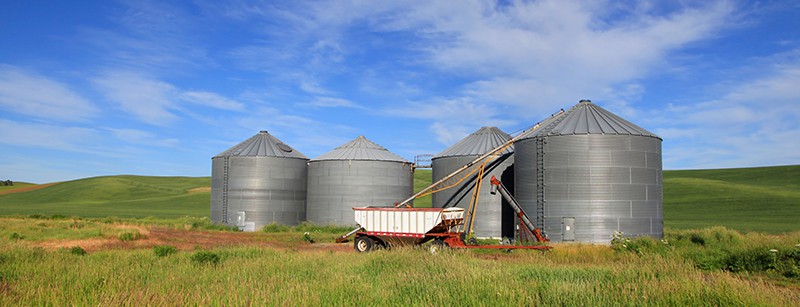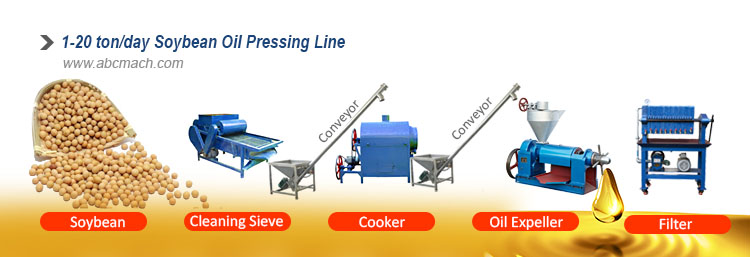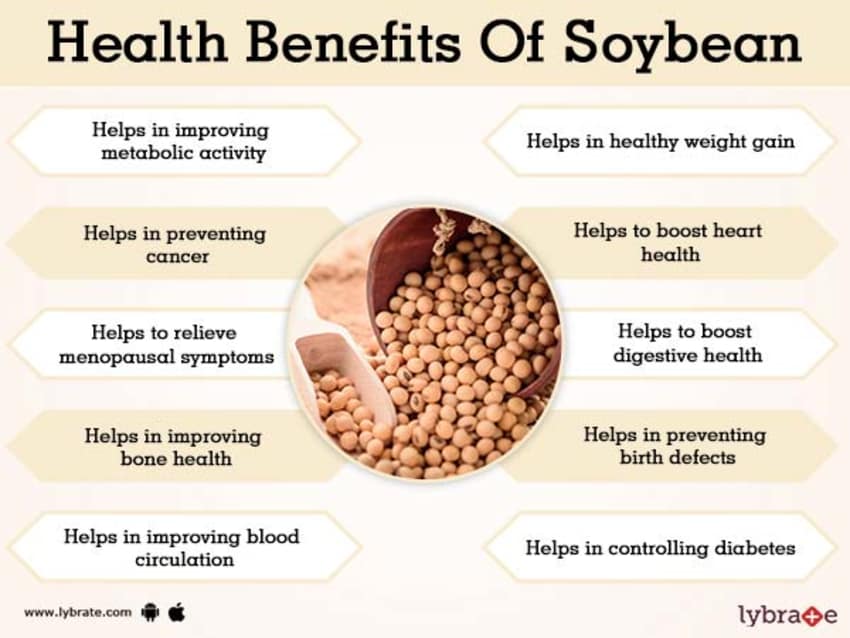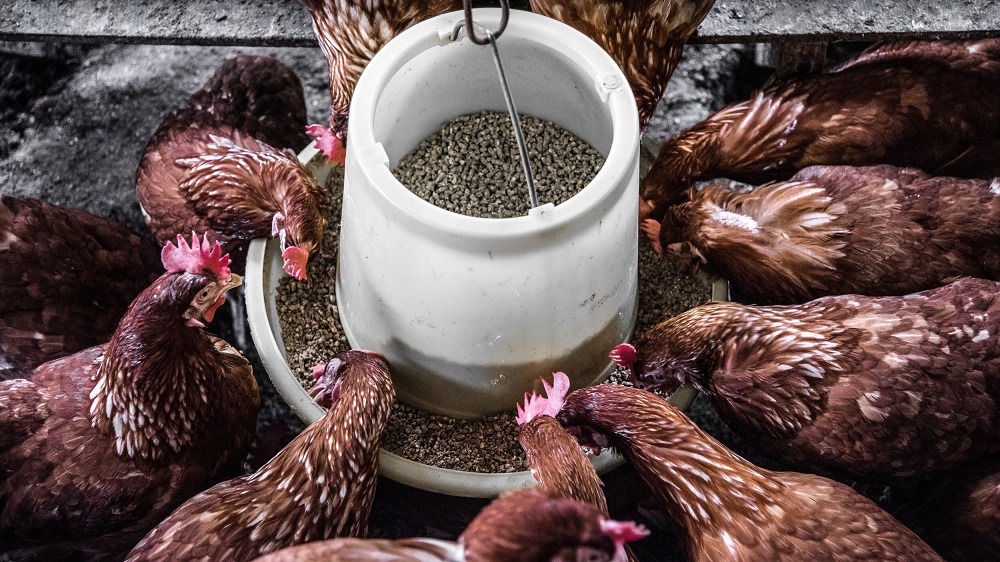Soybeans: traditional crop and the most important crop of modern times. Here you can learn how to process soybeans and what is made from them. We have also summarized recipes with soybean products and merchandise information about the valuable ingredients of the legume.
Soybeans: Origin and characteristics

Storage and Conditioning of soybeans - Source: andersonscanada.com
Soybeans belong to the papilionaceous family and thus to the legume family. The crop is often called soybean for short. Soybeans are one of the oldest cultivated plants in the world and originated in China. There they were cultivated about 5000 years ago and were considered one of the 5 sacred grains. (In addition to soybeans, they included rice, wheat, barley and millet.) Soybeans were actually known in Europe from the 17th century, but were first cultivated for plant breeding in Austria in 1872. In the U.S., soybeans have been cultivated on a large scale since the beginning of the 20th century, and now they are known and popular all over the world. China, India, Indonesia, Africa, Philippines, USA, Brazil, Argentina, Bolivia, Paraguay and Russia are the main soybean growing areas. However, genetically modified soybeans are grown in some countries. Soybeans are the world's most important crop.
Up to 5 seeds grow in each of the soybean pods, which are 2 to 10 cm long. These can be brown, yellow, white, green or black-purple and also vary in shape. Soybean seeds can be round, egg-shaped or kidney-shaped and can be flat or domed.
Soybeans: Purchase, storage and processing

Example of soybeans being processed- source: abcmach.com
Soybeans are mostly available dried in our country. You can store them airtight, dark and dry almost indefinitely, but at least a year. If you want to buy fresh soybeans, try Asian stores. The fresh pods will keep in the refrigerator for about 2 days. If you want to use only the seeds from the fresh soybeans, you should leave them in their pods until processing. This is because the seeds of the soybeans unfortunately spoil very quickly on their own.
Both the seeds and the whole soybeans are simply boiled in water until they are soft. Incidentally, if you order edamame (Japanese for soybeans) in an Asian restaurant, you'll get young soybeans picked before they're ripe and steamed or boiled with lots of salt - a popular Japanese snack to go with beer.
Genetically modified soybeans are grown primarily in the U.S., but also in other countries. If you want to avoid this, you should opt for organically grown soybeans.
Soybean Product: Soybean Oil
A large proportion of soybeans are not consumed in their original state, but are processed into versatile products. We present the most important ones:
Soybean oil: a large proportion of soybeans is processed into oil, which is used in cold cooking or for the production of margarine and frying fats. Interestingly, the oil from soybeans can also serve as a substitute for petroleum as a fuel and is used in the cosmetics industry.
Soy milk: Strictly speaking, the drink made from soybeans must be called soy drink in our country. The milk substitute is made from dried yellow soybeans. The nutrient content is quite similar to that of cow's milk, yet drinks made from soybeans are often fortified with vitamin B12 and calcium. They come in many flavors.
Soy meat: Made from ground soybeans, the flavor of the ground meat is somewhat reminiscent of veal. The "meat" from soybeans is used for sauces, for example, and must swell in water or broth before processing.
Soy sauce: The classic sauce for sushi is made from roasted and ground soybeans and other ingredients. The best known are the Japanese and Chinese soybean sauce. It is not only used as a dip for raw fish bites. The salty-spicy sauce made from soybeans is also suitable for marinating meat and seasoning stir-fry dishes.
Tempeh: Soybeans are peeled, cooked, inoculated with molds and ripened in foil. Bread made from soybeans is available in health food stores and health food stores. In this form, soybeans are suitable as a meat substitute and can be fried, deep-fried or boiled.
Miso: The basis for the Japanese spice paste is fermented soybeans, cooking salt and grain. Prepared in this way, soybeans are used as a soup base or seasoning for various dishes.
The Ingredients of soy beans

Health Benefits of Soybeans - Source: lybrate.com
Proteins
Proteins are the prerequisite for life. This is because all cells require proteins, and all living things are made up of these smallest cells. The soybean contains 36 percent protein. The special thing about soy protein is that it supplies the body with all eight essential amino acids and is thus equivalent to animal protein suppliers such as chicken protein and cow's milk. Especially for people who eat a purely vegetarian diet, e.g. due to a milk protein allergy or lactose intolerance, soy can be a full-value substitute for animal protein.
Soy protein can also significantly reduce the risk of cardiovascular disease. It has been proven that the consumption of at least 25 g of soy protein daily - combined with a cholesterol- and fat-reduced diet - can significantly lower cholesterol levels. Among other things, 25 g of soy protein are already contained in a ? liter of soy milk or in 250 g of soy yogurt.
Fatty acids
The German Nutrition Society (DGE) recommends a fat intake of 60 to 80 g per day, with saturated, monounsaturated and polyunsaturated fatty acids each accounting for one third.
But the reality is quite different: Germans consume too much saturated and too little polyunsaturated fatty acids. A simple way to change this ratio is to use soybean oil. Because while animal foods predominantly supply saturated fatty acids, high-quality soybean oil provides the body with 64 percent polyunsaturated fatty acids.
Soybean oil has a cholesterol-lowering effect - and can thus prevent the risk of cardiovascular disease.
Carbohydrates/Fiber
Soybeans contain nearly 22 percent dietary fiber. A diet rich in soy is therefore particularly suitable for supplying the body with the necessary dietary fiber.
Depending on how they are processed, individual soy products provide different amounts of dietary fiber. TVP (textured soy protein) in particular has a high fiber content of 25 percent and is therefore particularly favorable for a high-fiber diet.
Vitamins and minerals
With vitamins B1, B2 and E as well as potassium, magnesium and iron, soybeans contain a whole range of important vitamins and minerals; soybean germ also contains vitamin C.
In 100 g of soybeans (edible portion) there are about
87 % of potassium
73 % of magnesium
55 % of iron
50 % of manganese
83% of vitamin B1
31% of vitamin B2
13 % of vitamin E
(recommended daily intake for adults by the DGE).
Isoflavones
Isoflavones are possibly one of the most sensational components of the soybean and have been the focus of much scientific research for some time. They are believed to have a number of positive effects on the human body, including cancer prevention.
Soybeans are the only source in which the isoflavones genistein and daidzein are present in significant quantities. Both are thought to reduce the risk of osteoporosis and help prevent the formation of tumors of certain cancers, including breast and prostate cancer. Isoflavones are also often referred to as phytoestrogens or plant estrogens. Isoflavones are currently thought to influence the hormonal change in the female body, menopause, and may help reduce menopausal symptoms.
Lecithin
Lecithin is needed by us for many metabolic reactions, with the soybean being the main source for obtaining lecithin. Lecithin is believed to contribute to balanced cholesterol levels and prevent the formation of gallstones. Lecithin is vital for our central nervous system and is even used therapeutically here in case of disorders. It is responsible for the elasticity of our cells and is an important substance for cellular respiration.
How healthy is soy?
In recent years, plant-based alternatives to animal products have enjoyed increasing popularity: more and more companies are expanding their vegan product range and sales figures are rising steadily. Soy products such as soy milk, cream and quark or even tofu are becoming increasingly popular. With the rising consumption of soy, however, critical voices are also being raised: Soy is harmful to health. In the following article, we investigate this concern and briefly summarize the current state of scientific knowledge.
1 Nutritious food
The soybean is basically characterized by its high protein and nutrient content. It contains all the essential amino acids, i.e. protein building blocks that the body cannot produce itself. If you replace meat and sausage products with the soy product tofu, you consume many monounsaturated and polyunsaturated fatty acids and avoid cholesterol. Natural, non-heavily processed soy products such as tofu and tempeh (fermented soybeans) are often low in fat and higher in protein and nutrients.
2 Thyroid
Soy has come under criticism primarily because of the so-called isoflavones, secondary plant compounds that are structurally similar to the human hormone estrogen and can influence hormone balance. Insofar as thyroid diseases exist, isoflavones can reduce the formation of thyroid hormones. In individuals who do not have thyroid complaints, there is no evidence of negative effects on the thyroid gland. However, with regular soy consumption, it is recommended to ensure adequate iodine balance in the body - the research situation is not yet clear. In general, the content of isoflavones in processed soy products such as tofu, tempeh or soy milk is significantly lower than in pure soybeans.
3 Cancer risk
The risk of thyroid cancer is reduced by up to 55% in people who consume tofu. Although some websites and researchers warn that the risk of breast cancer is increased with soy consumption, this is contradicted by the low rates of breast cancer in East and Southeast Asia, where soy is traditionally consumed in large quantities. Equally low are rates of prostate cancer in Asian countries. In addition, Asian men were found to have higher concentrations of potentially protective isoflavones in the prostate than Western study participants. Even though additional (regional) dietary, health and environmental factors besides soy consumption play a role in the development and prevention of diseases, such findings can be read as important first indications of the effects of different eating habits.
4 Menopausal symptoms
Another finding from Asia points to additional beneficial properties of soy: In parts of Asia, women suffer less from hot flashes and classic menopausal symptoms. It is assumed that they take in more isoflavones as a result of the soy-rich diet, which compensate for the drop in hormones during menopause due to their similarity to the hormone estrogen. However, taking isolated isoflavones in the form of high-dose supplements for these and other health reasons is generally not advised.
5 Heart disease
Because they are cholesterol-free and contain high levels of monounsaturated and polyunsaturated fatty acids, soy products stand out as "heart-friendly" foods. The risk of cardiovascular disease can be partially reduced by consuming soy, which has been shown, for example, in Japanese post-menopausal women.
6 Osteoporosis
In osteoporosis, calcium is removed from the bones, causing a decrease in bone density and bone loss. Soy protein and isoflavones appear to have a positive effect on this process: Studies show that fewer cases of osteoporosis occur in people from countries with habitually high soy consumption (but see above note on region studies). Regular consumption of (partially calcium fortified) soy milk may have preventive effects regarding osteoporosis in post-menopausal women and may prevent bone loss.
7 Official expert opinions
Overall, the German Federal Institute for Risk Assessment (BfR) states that "the intake of isoflavones in the context of a normal soy diet at usual consumption levels can be considered safe according to current scientific knowledge." Our science advisor, Dr. Markus Keller of the Institute for Alternative and Sustainable Nutrition (IFANE), summarizes the data on soy similarly:
"Claims about the adverse health effects of soy consumption [are] often presented in a one-sided way or [are] at least controversial (...). In some cases, they are based on a single study. Alleged 'evidence' on soy-critical websites is often inadequately researched, cited literature is sometimes uncleanly or incorrectly reproduced, and studies that point to possible positive effects of consuming soy products are ignored. Consequently, corresponding websites and articles should be critically scrutinized. According to the current state of science, moderate consumption of soy products has more positive than possible negative health effects. However, more research is needed in this area."
8 Conclusion: Soy is harmless in moderation.
One thing is certain: if there is no physical reason not to eat soy (such as thyroid disease or soy allergy), there is nothing wrong with moderate soy consumption. Tofu and other soy products that are not overly processed, such as tempeh and soy milk, can make a valuable contribution to a healthy plant-based diet. Finally, it should only be briefly mentioned that the consumption of soy is also far less harmful from an environmental point of view than is sometimes emphasized: Around 80% of the world's soy harvest is used as feed for the production of animal products and not for direct human consumption. Negative environmental impacts such as the ongoing clearing of rainforest to open up further soybean cultivation areas are thus clearly attributable to animal production and consumption. In addition, soy products produced in Europe for direct human consumption (such as these tofu products) are often made from sustainably grown North American or European soybeans: Whether from Canada, southern France, Italy, Austria or even southern Germany, soy is not only grown in South American monocultures.
Soy as feed

Soy being fed to livestock - Source: surgeactivism.org
Tofu, soy milk and soy sauce - these are the products that consumers think of when they hear the word soy. Not on the list, however, are eggs, milk and, above all, meat. In fact, 80 percent of the coveted bean is processed into meal, which then ends up as feed in animal troughs. After all, there is a growing global hunger for meat, which can be easily produced with relatively inexpensive soybean feed. However, the sought-after soybean plant is leaving clear traces on our planet.
Soybeans have been grown in Asia for thousands of years, but over the past century, soybean production has expanded dramatically. In the last sixty years, production has increased more than tenfold from 27 million tons to 360 million tons. Eighty percent of the world's soybeans come from the USA, Brazil or Argentina. Huge areas of forest and savannah have been and are still being converted to expand arable land. From 2000 to 2010, 24 million hectares of land in South America were converted to cropland. Unique habitats for plants and animals are being lost, fertile soil is being destroyed and water is being contaminated.
A total of about 3.5 million cattle are slaughtered in Germany each year, as well as more than 55 million pigs and about 703 million poultry. (As of 2019) For most of these animals, most of which come from intensive livestock farming, soy has now become a central component of the feed. This is especially true for pigs and poultry. And this is precisely the meat that is most in demand by Germans! In total, about 4.5 million tons of soybean meal are fed to animals in Germany.
Consumer information on soy
In the public discussion in Germany, the topic of feeding has unfortunately played a subordinate role in animal products up to now. Animal husbandry is much more prominently debated. However, the topic of animal feeding is extremely relevant to the footprint of our diet because the ecological and social impacts in the producer countries are so immense! In order to give consumers a choice at all, WWF is therefore calling for mandatory labeling of feed on all animal products. Feed with genetically modified ingredients is subject to mandatory labeling - but only vis-à-vis the animal farmer who buys the feed. Meat, eggs and milk from animals fed with genetically modified feed do not currently have to be labeled!
Sustainability criteria for soy
When using soy, as a more sustainable protein feed, WWF demands that minimum sustainability requirements must be met, even outside the EU. Not all soy from overseas is problematic per se. Efforts are already being made to grow soy under more sustainable conditions and to prove this by means of certification: free of deforestation and genetic engineering or from organic cultivation.
The WWF minimum requirements for more sustainable cultivation of soy are currently met in the conventional sector by the following certifications:
DanubeSoy/Europe Soy
ProTerra Certification
Roundtable for Responsible Soy - RTRS Non-GMO Credits (RTRS NON-GMO)
ProTerra and RTRS certifications prescribe minimum requirements in terms of social and environmental standards - even though there is still considerable room for improvement, for example in the use of chemicals, deforestation and soil fertility. Likewise, Danube Soy/Europe Soy meets the minimum requirements, with the advantage of shorter transport distances.
Organic soy exceeds the minimum requirements - therefore WWF supports the use and expansion of organic soy. From WWF's point of view, organic farming is the most sustainable form of agriculture at the moment:
- Biokreis e.V.
- Bioland e.V.
- Biopark e.V.
- Demeter e.V.
- EU organic regulation
- Ecoland e.V.
- Gäa e.V.
- Naturland e.V.
- Association of organic farms e.V.
The alleged economic attractiveness of soy is deceptive. "Soy provides a high protein content for animal feed and is available at low prices on the world market without pricing in the local ecological and social impacts," criticizes WWF consultant Maja-Catrin Riecher. Against the massive import of soy from overseas, feed production in Germany with its higher legal standards has not been competitive and domestic protein-rich feeds have been displaced and so far only eke out a niche existence.
However, due to the increasing negative impacts in North and South America, interest in domestic/European feeds is rising again. Depending on the animal species, soy can be replaced by other feedstuffs in a wide variety of ways. The WWF has commissioned feed studies on this subject, which clearly show that as much as 65 percent of the soy volume imported today could already be replaced by domestic feed under the current conditions and animal numbers!
With regard to the preservation and promotion of natural soil fertility and a necessary diversification of crop rotations, WWF sees a necessary focus on the expansion of fine-seeded legumes and grain legumes.
More sustainable native/European protein forages for WWF are mainly:
- Fine-seeded forage legumes (including clover and alfalfa).
- Grain legumes (including field bean, pea, lupins, as well as soy from regional production and DonauSoja)
- rapeseed meal and sunflower meal from domestic (regional) production
- Other by-products from domestic oilseed and ethanol production (DDGS = Dried Distillers Grains with Solubles).
- WWF links the use to the requirement to adjust the number of animals per farm to the available (feed) area.
To achieve these goals, WWF initiated, among others, the "Protein Forum" in 2014, whose work it coordinated until 2018. Since then, the Protein Forum has been continued by the Federal Agency for Agriculture and Food. The Protein Forum is a dialog platform for all stakeholders in the protein feed value chain. The aim is to jointly develop solution strategies. Within the framework of the forum, a position paper was agreed upon by the members in 2017 and individual target agreements were formulated. Here is the target agreement of WWF Germany.


